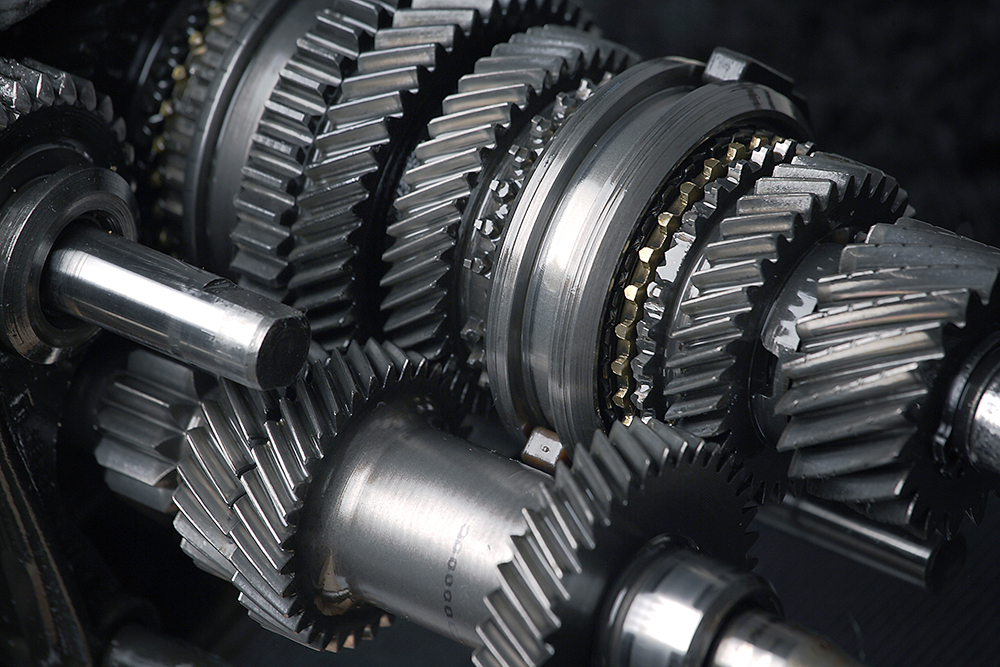What gears should I use in my gearbox?
Spur gears, bevel gears, or worm gears – which design is right for the gearbox.
The choices for gearing when designing a gearbox are determined primarily by the orientation of the input and the output shafts. Spur gearing is the proper selection for inline gearboxes and bevel gearing or worm gearing are the proper selections for right-angle gearboxes.
When constructing an inline spur gearbox, the design is such that multiple pairs of spur gears are stacked with the output shaft of one gear pair being the input shaft of the next pair. This allows for speeds of any ratio and output shaft rotation being in the same direction as the gearbox input direction, or it can be opposite to it. In order to keep the rotation in the same direction, the number of spur gear pairs must be even. If the desire is to have the output shaft rotation be opposite the rotation of the initial input shaft, then an odd number of spur gear pairs is required. Although very specific and unique ratios can be developed using inline spur gear pairs, the effects of the torque buildup will limit the final design.
When designing right-angle gearboxes, the decision on gearing choices is limited to bevel gearing and worm gearing. As noted in the name, these gearboxes have input and output shafts which are fixed at 90 degrees to one another. For gearboxes constructed with bevel gears, the input and output shafts will be intersecting. For this design, spiral bevel gears are preferred over straight bevel gears because spiral bevel gearing has higher load-carrying capacities and are quieter in operation.
For bevel gearboxes, the input shaft typically will power the bevel pinion and the gear powers the output shaft. The direction of rotation of the input and the output shafts will always be opposite in direction. The range for speed ratios in bevel gearboxes varies from a minimum of 1:1 to a maximum of 6:1 due to the constraints of spiral bevel gear design. As such, worm gearing is preferred when high reduction ratios are required. Worm gearboxes will always have input and output shafts that are non-intersecting. Worm gearing does allow for very high torque output; however, worm gears are less efficient than bevel gears due to the sliding motion between the worm gear and worm wheel, which results in friction and heat generation. Spiral bevel gears have a higher load-carrying capacity than worm gears. This is because spiral bevel gears have more contact area between the teeth, which distributes the load more evenly. Additionally, spiral bevel gears are quieter than worm gears due to their smoother meshing action. The output shaft rotational direction for a worm gearbox will be the same as the input shaft rotational direction, if the worm gears are produced with a right-hand lead. If the worm gearing is produced with a left-hand lead, then the rotational direction of the output shaft will be opposite of the input shaft rotational direction.
Post time: Jul-18-2023





